Kate Leibfried's Blog, page 10
July 24, 2013
The 3 Things I Learned About Marketing
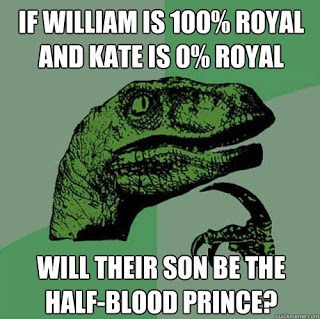 Photo Credit: TumblrOne of the things writers/authors tend to loathe is promotion. We're little fish in a big, ol' soupy pond of poetry and short stories and vampire novels and John Grisham and self-help books and the latest celebrity autobiography. Not only that, we are competing with other news and things that have nothing to do with the literary world (this week was mainly Kate Middleton's royal baby, memes about Kate Middleton's baby, baby name speculation, and George Zimmerman). Amidst all the celebrity gossip, George Takei witticisms, and big literary news (see
Photo Credit: TumblrOne of the things writers/authors tend to loathe is promotion. We're little fish in a big, ol' soupy pond of poetry and short stories and vampire novels and John Grisham and self-help books and the latest celebrity autobiography. Not only that, we are competing with other news and things that have nothing to do with the literary world (this week was mainly Kate Middleton's royal baby, memes about Kate Middleton's baby, baby name speculation, and George Zimmerman). Amidst all the celebrity gossip, George Takei witticisms, and big literary news (seeSo, we have to do our best to drum up support and keep twittering/blogging/posting updates on Facebook in order to keep our names alive and our images fresh. All this, while trying to write the next great American novel.
And you don't have to be an aspiring writer to know how this feels. I also run a small photo booth company with my brother and we are going through the same thing: How does a small-time company/person fight their way into the market while competing with the big dogs--the established corporations and big-name celebrities?
One of the secrets: your marketing infrastructure.
Building your marketing system is a lot like building a series of roads. You need quality, logical connections that are user-friendly and make people want to say, "Yes, I'll take a drive down this road! Seems like a good way to travel." My first stab at creating my marketing infrastructure looked a lot like this:
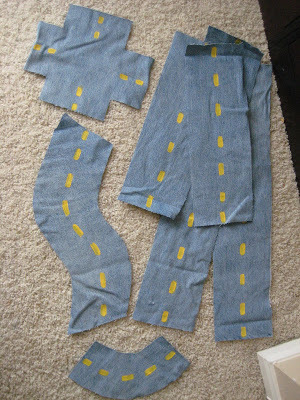 Photo Credit: dollarstorecrafts.com
Photo Credit: dollarstorecrafts.comThe pieces were in place, but they were not logically connected and were fairly uninteresting. I was so excited that I finally had an author page and a Twitter account, that I didn't think about how they fit together in the larger scheme of things. How did outsiders see my website or Facebook page? Would somebody make a logical leap from my blog to my LinkedIn profile? Would they want to?
The second time around, I've figured a few things out. I'm not a marketing expert (although I do some free-lance marketing for one of my many side-jobs), but I do know a thing or two about website/page aesthetics and drawing positive attention to your marketing infrastructure. Here's what I've learned:
1. Names and name-recognition are huge.
This is part of the reason I decided to start using a pseudonym in my writing (
http://katebitters.blogspot.com/
Clever, no? That way I don't have to start from scratch and people will still be directed toward my actual blog via the blog with my name attached to it.
So, the highways are connected. But why would people want to drive on them? What's special about your roads? The destinations.
2. Create interesting, consistent content.
Maybe you noticed: When I first created this blog, my posts were all over the map. Most vaguely related to writing, but some were really just about me or whatever I was thinking about at the moment. Not too smart if you want to foster a loyal readership. Yes, create a variety of content, BUT make sure it stays true to your mission.
Don't have a mission or a goal for your blog? Create one. Otherwise, you'll just be floundering around, posting about dinner or your lovely day at the beach. People like a blog with a purpose. Like JourneyWoman.com: a blog with the specific goal of becoming the online travel resource for women. All posts relate back to this topic and target a specific, loyal audience.
So, we talked about consistency. Great. That's a good start for your blog/Twitter/Facebook updates. But there's a second, crucial element you almost must consider: Is it interesting? Of course, this is a completely subjective criterion, but my rule of thumb is: Would I read this? If not, that's a bad sign for your audience.
In sum, consider the "interest" factor when you're posting and DON'T over-post. Despite what Twitter experts say, there is such a thing as too much. I recently stopped following Bob Collins on Twitter because I was tired of getting thirty updates an hour about Obama's latest speech or the Timberwolves' game he was watching. Just watch the damn game, Bob! I don't need your analysis every time someone misses a basket! Whew. That felt better. How about one more tip?
3. Remember: We live in a visual world
This point goes along with creating interest. What are people interested in today? (Not necessarily reading...which makes my profession extra-challenging!) Today's audience is most captivated by short videos and images. Visual media break up the monotony of words and re-capture your readers' attention. They also lend support to what you're saying. For example, if you are blogging about the mass extinction of honey bees, a pile of dead bees will likely stir more emotions and give more credence to your argument than if you were to merely describe the bees' troubles.
Will Steger used this tact when I saw him speak at the Nobel Conference at Gustavus in 2007. His speech was on witnessing climate change first hand through his arctic explorations. He gave many compelling arguments about the validity of climate change and we all nodded gravely in agreement, letting some of the facts stick in our brains, while most of them sailed in one ear and out the other. Then, he showed us a photograph of a dead polar bear and you could feel the oxygen leave the room as we all gasped. Woah. There it was: one of the outcomes of climate change lying dead on the ice. It was a powerful image and I'll never forget it.
(To bring up the mood, here's a little meme for you:)

Remember, it is also important to have an aesthetically-pleasing marketing base. What I mean by that is this: create a beautiful, sleek website, blog, Facebook page, etc. that is interesting, but not too busy. There are plenty of articles on how to do this, so I won't get into the specifics here. Just keep in mind that your pages should be (above all) captivating and easy to navigate. I spent an insane amount of time redesigning my new blog header, but I am incredibly happy with the result. The investment was worth it.
I could go on, but let's end it here! Maybe I'll come back to this topic in a later post. In the meantime, I'm going to keep working on my marketing infrastructure until it looks more like this:
 Credit: Diary of a Crafty LadyBest of luck to you in your marketing endeavors! It is possible for little fish to thrive in the big, scary pond. All we need is a little strategy and a lot of follow-through.
Credit: Diary of a Crafty LadyBest of luck to you in your marketing endeavors! It is possible for little fish to thrive in the big, scary pond. All we need is a little strategy and a lot of follow-through.
Published on July 24, 2013 10:31
July 18, 2013
JK Rowling, the Meaning of a Name, and Me
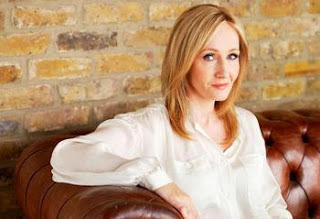 Just last week it was discovered (or leaked, really) that J.K. Rowling, acclaimed author of the Harry Potter series, wrote and published a book this past spring under the pseudonym Robert Galbraith. Uproar! Outcry! How could she deceive us like this? ...Let's all run to the bookstore and buy her new book!
Just last week it was discovered (or leaked, really) that J.K. Rowling, acclaimed author of the Harry Potter series, wrote and published a book this past spring under the pseudonym Robert Galbraith. Uproar! Outcry! How could she deceive us like this? ...Let's all run to the bookstore and buy her new book!And J.K. Rowling sat back and watched it all happened, confessing that she was "disappointed" that the secret had slipped after only a few months. And I completely empathize with her disappointment. She had many reasons for using a pseudonym when she wrote The Cuckoo's Calling and many questions that she'll never know the answer to:
How might the book have fared if the public never found out it was penned by Rowling? How would critics have received it? How many copies would it have sold? Would "ex-military man" Galbraith have achieved as much fame and recognition as Rowling? Doubtful. But here are some things that happened "pre-reveal:"
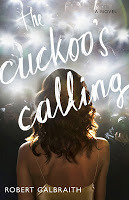 -The Cuckoo's Calling sold around 1,500 copies
-The Cuckoo's Calling sold around 1,500 copies-It received many positive reviews by critics and the public alike
-It also received many negative reviews from people calling it "slow-paced," "poorly edited," "unexceptional," and "unambitious."
If I was Ms. Rowling, I would have treasured the negative reviews just as highly as the positive reviews because they were REAL. They were authentic. They acknowledged the story and the writing rather than the author who wrote the words. After so many years of zero anonymity, it must have been a relief to see people talking about the story without paying attention to the name behind it. Which leads me to my point: names.
Names mean a lot. Names sell books. Even the "name" J.K. is fictional (Joanne is Rowling's first name; she has no middle name). Rowling created her pen name in order to make herself more marketable (It is a sad truth that a male author's name has more selling power than a female author's, thus the ambiguous J.K.). For a few years, I have been considering the use of a pen name in my own writing. Rowling gave me the shot of courage I needed to follow through with my plan.
My reasoning? Threefold, really.
 Wouldn't it be nice to have one of those?1. My real name is difficult. It is German, practically unpronounceable to Americans, and tough to spell. Not great for marketing. Instead, I've chosen a name that is easy to spell, an English word, and memorable. It might also reflect some of my characters' attitudes (or my own, at times), but don't quote me on that!
Wouldn't it be nice to have one of those?1. My real name is difficult. It is German, practically unpronounceable to Americans, and tough to spell. Not great for marketing. Instead, I've chosen a name that is easy to spell, an English word, and memorable. It might also reflect some of my characters' attitudes (or my own, at times), but don't quote me on that!2. I would like to separate my writing persona from my actual persona. Not that we're entirely
different, mind you. I'd simply like to create a bit of a barrier between my personal life and my professional life. It's a privacy thing, yes, but it's also a way to say, "Ok, I'm stepping into character now. Time to write."
3. I'd like a clean slate. It's about time to leave all the embarrassing pictures of the twenty-one year old, crazy college girl in the dust. My new character doesn't have a past, only a future. Isn't that liberating?
So, thank you J.K. for giving me the courage to let my alter-ego emerge. It feels great to let her out.
-Kate Bitters
P.S. This change requires a super, mega, massive reworking of my entire author infrastructure: Facebook, website, Twitter, revising my book cover, new marketing campaign, new business cards, etc. Next week's post will be about the ins and outs of building this infrastructure. Wish me luck and, in the meantime, Like my new Facebook page! *wink*
Published on July 18, 2013 16:18
July 2, 2013
July is the New November!
 Who says National Novel-Writing Month has to be in November every year? What if you are starting a new job, a new relationship, and moving into a new apartment in November? That was what my November was like last year and, let me tell you, there was not a lot of writing done that month. Not enough to fill a children's book, let alone a novel. So, I reworked the calendar a bit.
Who says National Novel-Writing Month has to be in November every year? What if you are starting a new job, a new relationship, and moving into a new apartment in November? That was what my November was like last year and, let me tell you, there was not a lot of writing done that month. Not enough to fill a children's book, let alone a novel. So, I reworked the calendar a bit.After all, novel-writing month is merely a state of mind, isn't it? It's just a nip in the pants to put your hands on the keyboard and start typing.
And that's exactly what I plan to do. But I can't just plan, I have to act. That's the key. Too many times in life, I find myself planning for this and hoping for that. I find myself dreaming and wishing. I don't always find myself doing. To overcome this over-planning, under-performing tendency, I created a game plan:
Five pages a day (minimum), every day for the month of July. No exceptions; no excuses.
Yesterday, I wrote seven pages and today I'm on my fourth. I could easily stop for the day, but I won't. I have my goal hanging in front of me and I need to achieve it. I need to record how many pages I wrote for the day on the big calendar hanging over my bedroom door. It is a reminder that I am doing great things this month and it is a way to stay focused and on-track.
So, back to the book! I have some writing to do!
Published on July 02, 2013 11:57
June 17, 2013
Meet the Artist!
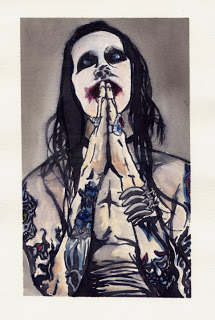 I finished writing the first draft of Ten Thousand Lines a couple months ago. Since then, I have been busy pouring over the manuscript, rewriting it and making corrections, and looking for inconsistencies in my characters and settings. Not exactly fun, but absolutely necessary. However, there has been one ray of sunshine amidst all the tedious editing: working with Sova.
I finished writing the first draft of Ten Thousand Lines a couple months ago. Since then, I have been busy pouring over the manuscript, rewriting it and making corrections, and looking for inconsistencies in my characters and settings. Not exactly fun, but absolutely necessary. However, there has been one ray of sunshine amidst all the tedious editing: working with Sova."Who is Sova?" you ask. She is the artist who will be creating eight watercolor and ink paintings for my book.
Huzzah! I have an artist! I feel incredibly lucky to have met Sova when I was an undergrad at Gustavus. At the time, I knew she dabbled in art, but I had no idea of the extent of her talents until I visited her Facebook page last year and browsed through her many drawings, paintings, paper cuts, and stencils. I was stunned. Here was the emotional, provocative style I was looking for in an artist. Here was the artist for my book.
I sent Sova a message right away and she immediately agreed to take on the task of painting eight works to accompany my story. This was last fall and, since then, she has been patiently waiting for me to finish my manuscript so she can get to work. That finally happened this past April and she's been working hard ever since to create eight masterpieces that coincide with the dystopian theme of Ten Thousand Lines. So far, so good!
Sova's work is disturbing and raw; it has the ability to grab a hold of you and give you a swift kick in the stomach. When I look at a piece of art and have an instant visceral reaction to it, I know it's good. I know it's doing its job. In my mind, the main purpose of art is to make us ponder and emote and consider the world in a new light. I think Sova's art does that and I am as pleased as a puppy in a playground that she has agreed to work with me.
Here's a sample of her work*. Enjoy. Or at least feel something...
(*If you like what you see, many of her works are available for purchase. Let me know, and I can get you in touch with her.)
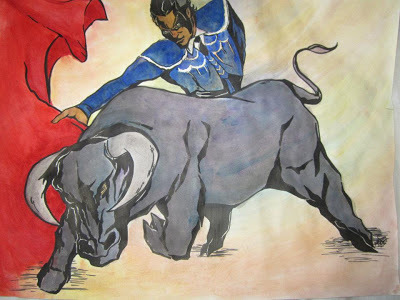

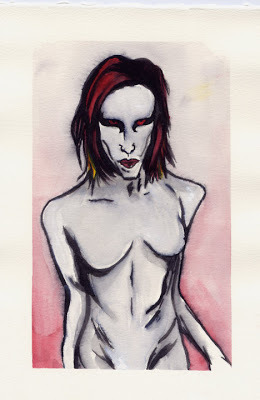
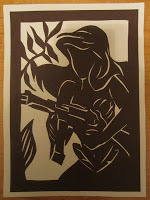
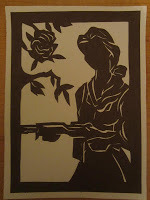
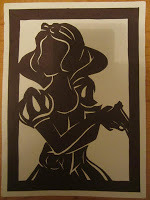
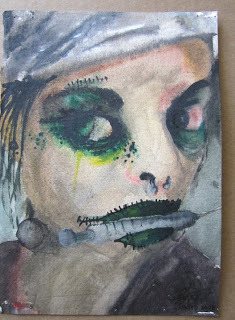
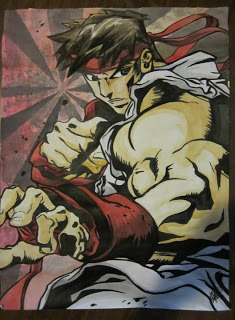
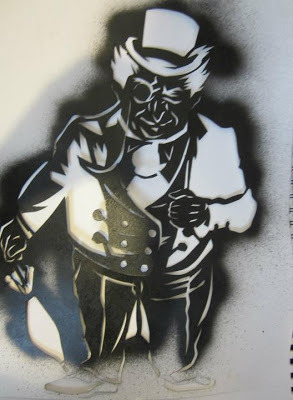

Published on June 17, 2013 09:06
June 10, 2013
On Icarus
I've been thinking about Icarus lately, ever since I stumbled across this amazing painting by Bryan Larsen. It's not complete (you can see the outline of Icarus' right wing and the beginnings of a set of steps at the bottom), but I kind of like it this way. It's as if he's stepping out of the vague scratchings of myth into the fleshiness of reality.
 Photo Credit: Bryan LarsenTo me, the painting tells a story. It speaks of power mixed with humility. It speaks of gathering courage and strength before taking flight. It speaks of baring one's soul.
Photo Credit: Bryan LarsenTo me, the painting tells a story. It speaks of power mixed with humility. It speaks of gathering courage and strength before taking flight. It speaks of baring one's soul.
If you don't remember the story of Icarus, it goes something like this: Icarus' father, Daedalus is a master craftsman. He designs two sets of wings made out of feathers and wax so that he and his son can fly away from the island of Crete. When he hands Icarus his set of wings, he warns him not to fly too high or the sun will melt the wax that holds his wings together. Icarus nods and smiles, but ultimately ignores the advice. He is too proud to skim across the sea. He rises up and up and eventually (surprise, surprise), the sun melts the wax and he plunges into the sea, where he drowns.
I think of this story and I wonder what Ovid and the other ancient Greek storytellers were trying to say. Don't fly too high? Don't let your pride get the best of you? Don't aim for things beyond your reach?
Although I understand that hubris can be a detriment to a person's success, I disagree with the main message of the story. Why not fly too high? Why not reach for the sun? Why hold yourself back and skim along the sea?
If you it's your dream to fly to the sun, you should do it. All you need to do is build a better set of wings.
 Photo Credit: Bryan LarsenTo me, the painting tells a story. It speaks of power mixed with humility. It speaks of gathering courage and strength before taking flight. It speaks of baring one's soul.
Photo Credit: Bryan LarsenTo me, the painting tells a story. It speaks of power mixed with humility. It speaks of gathering courage and strength before taking flight. It speaks of baring one's soul.If you don't remember the story of Icarus, it goes something like this: Icarus' father, Daedalus is a master craftsman. He designs two sets of wings made out of feathers and wax so that he and his son can fly away from the island of Crete. When he hands Icarus his set of wings, he warns him not to fly too high or the sun will melt the wax that holds his wings together. Icarus nods and smiles, but ultimately ignores the advice. He is too proud to skim across the sea. He rises up and up and eventually (surprise, surprise), the sun melts the wax and he plunges into the sea, where he drowns.
I think of this story and I wonder what Ovid and the other ancient Greek storytellers were trying to say. Don't fly too high? Don't let your pride get the best of you? Don't aim for things beyond your reach?
Although I understand that hubris can be a detriment to a person's success, I disagree with the main message of the story. Why not fly too high? Why not reach for the sun? Why hold yourself back and skim along the sea?
If you it's your dream to fly to the sun, you should do it. All you need to do is build a better set of wings.
Published on June 10, 2013 10:50
June 4, 2013
Get Outside, Get Creative!
It's summer! Even though June is off to a rainy and somewhat dreary start, keep in mind the benefits of getting outside and keeping active. Among the many benefits, it turns out, is a boost in creativity. Here's an article from Conservation Magazine (of Minnesota):
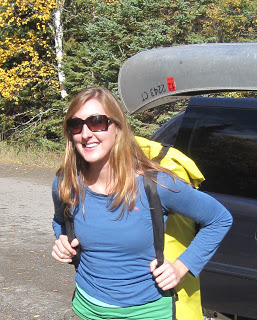 BWCA, Lake OneA new study has confirmed what you’ve probably suspected for awhile: Spending time in nature without computers, phones, and other electronic devices makes people more creative.
BWCA, Lake OneA new study has confirmed what you’ve probably suspected for awhile: Spending time in nature without computers, phones, and other electronic devices makes people more creative.
Most city-dwellers and suburbanites can attest that our interactions with nature are declining, while our attachment to technology is on the rise. The number of national park visits per capita has dropped by one-fifth in the last couple of decades, and people are spending less of their recreational time in nature. Researchers had investigated the effect of nature exposure on activities such as proof-reading and attention span, but they hadn’t yet examined possible links with creative problem solving.In a study published in PLoS ONE, 56 people completed 4- to 6-day hikes in Alaska, Colorado, Maine, or Washington. Participants were not allowed to bring any electronic gadgets with them. Twenty-four of the hikers took a test that measured their creativity and problem-solving skills before the trip began, while the other 32 people took the test on the fourth day of hiking.People who took the test after hiking scored roughly 50 percent higher than those who took the test before hiking, the study authors report. The improvement suggests that “there is a real, measurable cognitive advantage to be realized if we spend time truly immersed in a natural setting,” the team writes.The researchers couldn’t say whether the creative bump was caused by an increase in nature exposure or a decrease in technology use. But since the two usually go together, they write, “they may be considered to be different sides of the same coin.” — Roberta Kwok | 13 December 2012Source: Atchley, R.A., D.L. Strayer, and P. Atchley. 2012. Creativity in the wild: Improving creative reasoning through immersion in natural settings. PLoS ONE doi: 10.1371/journal.pone.0051474.
 BWCA, Lake OneA new study has confirmed what you’ve probably suspected for awhile: Spending time in nature without computers, phones, and other electronic devices makes people more creative.
BWCA, Lake OneA new study has confirmed what you’ve probably suspected for awhile: Spending time in nature without computers, phones, and other electronic devices makes people more creative.Most city-dwellers and suburbanites can attest that our interactions with nature are declining, while our attachment to technology is on the rise. The number of national park visits per capita has dropped by one-fifth in the last couple of decades, and people are spending less of their recreational time in nature. Researchers had investigated the effect of nature exposure on activities such as proof-reading and attention span, but they hadn’t yet examined possible links with creative problem solving.In a study published in PLoS ONE, 56 people completed 4- to 6-day hikes in Alaska, Colorado, Maine, or Washington. Participants were not allowed to bring any electronic gadgets with them. Twenty-four of the hikers took a test that measured their creativity and problem-solving skills before the trip began, while the other 32 people took the test on the fourth day of hiking.People who took the test after hiking scored roughly 50 percent higher than those who took the test before hiking, the study authors report. The improvement suggests that “there is a real, measurable cognitive advantage to be realized if we spend time truly immersed in a natural setting,” the team writes.The researchers couldn’t say whether the creative bump was caused by an increase in nature exposure or a decrease in technology use. But since the two usually go together, they write, “they may be considered to be different sides of the same coin.” — Roberta Kwok | 13 December 2012Source: Atchley, R.A., D.L. Strayer, and P. Atchley. 2012. Creativity in the wild: Improving creative reasoning through immersion in natural settings. PLoS ONE doi: 10.1371/journal.pone.0051474.
Published on June 04, 2013 07:30
April 30, 2013
Keeping A Small Sense of Wonder
When I took my dog for his evening walk yesterday, I paused and looked up. A squirrel was sitting on one of the thin branches towards the top of a tree, nibbling on something he held in his paws. I watched him for a second and I thought about how uninteresting squirrels had become to me. But why? If I saw a monkey in one of the Minnesota maples I would be ecstatic. But what's the difference between a monkey and a squirrel when you get right down to it? They're both small furry mammals with long tails that skitter around in the tree branches. They both climb and eat and run and shit. So, why don't I care a lick about the squirrel?
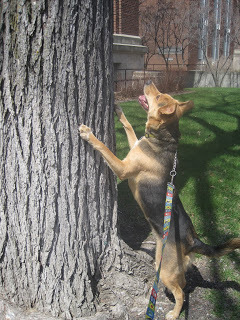 It's because I see it every day. It's because there are about five million of them in Minneapolis and five hundred of them around my block. They cross in front of my car when I'm driving and clamber up trees when I'm walking my dog. They are prolific. They are not special.
It's because I see it every day. It's because there are about five million of them in Minneapolis and five hundred of them around my block. They cross in front of my car when I'm driving and clamber up trees when I'm walking my dog. They are prolific. They are not special.
But they are to my dog. He treats squirrels exactly how he treated monkeys when we lived in Panama: with fervent attention and unabashed excitement.
And then I thought, "I should learn something from that..."
I am surrounded by amazing friends and supportive family members. I often take them for granted. I make excuses for why I can't attend this party or that coffee date. I assume they will be there for me when I need them...
As I watched the squirrel (and my dog drooled over it), I began to appreciate squirrels in a small way. I began to see them as amazing little creatures with superb balance and climbing skills--creatures who jump from tree to tree without a second thought. And I began to think about them as survivors, carving out a spot for themselves amongst humans in an unnatural, urban environment.
They are incredible, really. And so are many things in my life that I take for granted. My pumping lungs. My warm bed on a cold, spring night. The dotted yellow line that keeps cars from crashing into me head-on. The fact that I can look at a cluster of lines and curves and see words.
One of the things that truly makes an artist is the ability to look at mundane, common things and portray them in extraordinary ways. Tom Robbins breathed life into a plate, a spoon, and an old sock in Skinny Legs and All. John Updike made the life of washed-up basketball player seem tragically beautiful and unique in Rabbit Run. As a writer, you don't have to invent the wheel, you simply have to turn it or spin it or toss it in a way that's never been done before. The same is true for painters or musicians. One of my favorite paintings is of the most ordinary things imaginable: trees, hills, sunshine. It took the eyes of Van Gogh to see these things in a unique way:

Van Gogh didn't just see trees and sunshine. He saw texture and color and life. He saw movement and emotion.
My hope is that I will never lose my fascination with the world. My hope is that I will always maintain a small sense of wonder and think about the magic of squirrels and maple trees.
 It's because I see it every day. It's because there are about five million of them in Minneapolis and five hundred of them around my block. They cross in front of my car when I'm driving and clamber up trees when I'm walking my dog. They are prolific. They are not special.
It's because I see it every day. It's because there are about five million of them in Minneapolis and five hundred of them around my block. They cross in front of my car when I'm driving and clamber up trees when I'm walking my dog. They are prolific. They are not special.But they are to my dog. He treats squirrels exactly how he treated monkeys when we lived in Panama: with fervent attention and unabashed excitement.
And then I thought, "I should learn something from that..."
I am surrounded by amazing friends and supportive family members. I often take them for granted. I make excuses for why I can't attend this party or that coffee date. I assume they will be there for me when I need them...
As I watched the squirrel (and my dog drooled over it), I began to appreciate squirrels in a small way. I began to see them as amazing little creatures with superb balance and climbing skills--creatures who jump from tree to tree without a second thought. And I began to think about them as survivors, carving out a spot for themselves amongst humans in an unnatural, urban environment.
They are incredible, really. And so are many things in my life that I take for granted. My pumping lungs. My warm bed on a cold, spring night. The dotted yellow line that keeps cars from crashing into me head-on. The fact that I can look at a cluster of lines and curves and see words.
One of the things that truly makes an artist is the ability to look at mundane, common things and portray them in extraordinary ways. Tom Robbins breathed life into a plate, a spoon, and an old sock in Skinny Legs and All. John Updike made the life of washed-up basketball player seem tragically beautiful and unique in Rabbit Run. As a writer, you don't have to invent the wheel, you simply have to turn it or spin it or toss it in a way that's never been done before. The same is true for painters or musicians. One of my favorite paintings is of the most ordinary things imaginable: trees, hills, sunshine. It took the eyes of Van Gogh to see these things in a unique way:

Van Gogh didn't just see trees and sunshine. He saw texture and color and life. He saw movement and emotion.
My hope is that I will never lose my fascination with the world. My hope is that I will always maintain a small sense of wonder and think about the magic of squirrels and maple trees.
Published on April 30, 2013 09:55
April 21, 2013
Emptied Shoes
This photograph I took yesterday reminds me of a quote by Salman Rushdie:
"When I die, where will I be? A pair of emptied shoes."

If you haven't experienced the brilliance of Rushdie, I highly recommend reading The Satanic Verses, the book that caused such a stir that the Ayatollah Khomeini (supreme leader of Iran) issued a fatwa against him. He is a man of controversy and conviction and you don't have to agree with his political views in order to enjoy his colorful writing. To me, it's poetry. Here's another:
"But names, once they are in common use, quickly become mere sounds, their etymology being buried, like so many of the earth's marvels, beneath the dust of habit."
Read it again. Can you hear the music? The cadence? It makes my mind dance.
"When I die, where will I be? A pair of emptied shoes."

If you haven't experienced the brilliance of Rushdie, I highly recommend reading The Satanic Verses, the book that caused such a stir that the Ayatollah Khomeini (supreme leader of Iran) issued a fatwa against him. He is a man of controversy and conviction and you don't have to agree with his political views in order to enjoy his colorful writing. To me, it's poetry. Here's another:
"But names, once they are in common use, quickly become mere sounds, their etymology being buried, like so many of the earth's marvels, beneath the dust of habit."
Read it again. Can you hear the music? The cadence? It makes my mind dance.
Published on April 21, 2013 19:53
April 14, 2013
A Self-Pub Success Story
As I consider whether or not to self-publish my recently finished book, stories such as this one catch my attention. Hugh Howey clawed his way to the top of the Time's best seller list with his postapocalyptic thriller, Wool. He let his words lead him to success--not some marketing scheme designed by Viking Press or Simon & Schuster. That, to me, is a true measure of a writer.
However, despite the handful of success stories we hear about, such as Howey's (or Amanda Hocking's or E.L. James'), most self-published authors sell fewer than three-hundred copies. It can also be a tough road to travel when you're trying to get on the shelves of major book sellers, such as Barnes and Noble. They're none to keen on stocking indie books that weren't highly regulated by the big-dog publishing companies.
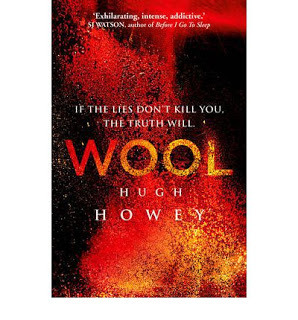 Not to mention, you're on your own for content review, editing, cover design, etc...unless you hire experts in each of these fields to polish your book until it shines. For my first book,
Elmer Left
, I did not hire expert help. Aside from the unpaid advice of a few knowledgeable friends and some help with the cover, I was on my own. I do not regret the decision, but I may head down a different path for my next book, Ten Thousand Lines. I may solicit help from a mentoring press, such as Beaver's Pond Press. Or pursue the traditional publishing route (there are several reasons why I might have more success with traditional publishers for book #2 than book #1...more on that in a later post).
Not to mention, you're on your own for content review, editing, cover design, etc...unless you hire experts in each of these fields to polish your book until it shines. For my first book,
Elmer Left
, I did not hire expert help. Aside from the unpaid advice of a few knowledgeable friends and some help with the cover, I was on my own. I do not regret the decision, but I may head down a different path for my next book, Ten Thousand Lines. I may solicit help from a mentoring press, such as Beaver's Pond Press. Or pursue the traditional publishing route (there are several reasons why I might have more success with traditional publishers for book #2 than book #1...more on that in a later post).
But, the allure of self-publishing is still there for me: the ease of publishing, the control over my content and voice, the ability to set my book's own price (and therefore royalty potential). It is still, in a way, the wild west of the publishing world and something about the raw power of self-publishing is undeniably appealing to me.
So, in conclusion...we'll see. I still have a first draft to edit and an artist to hire for a few paintings I plan to incorporate into my book. I'll let my book lead me where it would like to go. Books have the power to do that, you know.
However, despite the handful of success stories we hear about, such as Howey's (or Amanda Hocking's or E.L. James'), most self-published authors sell fewer than three-hundred copies. It can also be a tough road to travel when you're trying to get on the shelves of major book sellers, such as Barnes and Noble. They're none to keen on stocking indie books that weren't highly regulated by the big-dog publishing companies.
 Not to mention, you're on your own for content review, editing, cover design, etc...unless you hire experts in each of these fields to polish your book until it shines. For my first book,
Elmer Left
, I did not hire expert help. Aside from the unpaid advice of a few knowledgeable friends and some help with the cover, I was on my own. I do not regret the decision, but I may head down a different path for my next book, Ten Thousand Lines. I may solicit help from a mentoring press, such as Beaver's Pond Press. Or pursue the traditional publishing route (there are several reasons why I might have more success with traditional publishers for book #2 than book #1...more on that in a later post).
Not to mention, you're on your own for content review, editing, cover design, etc...unless you hire experts in each of these fields to polish your book until it shines. For my first book,
Elmer Left
, I did not hire expert help. Aside from the unpaid advice of a few knowledgeable friends and some help with the cover, I was on my own. I do not regret the decision, but I may head down a different path for my next book, Ten Thousand Lines. I may solicit help from a mentoring press, such as Beaver's Pond Press. Or pursue the traditional publishing route (there are several reasons why I might have more success with traditional publishers for book #2 than book #1...more on that in a later post).But, the allure of self-publishing is still there for me: the ease of publishing, the control over my content and voice, the ability to set my book's own price (and therefore royalty potential). It is still, in a way, the wild west of the publishing world and something about the raw power of self-publishing is undeniably appealing to me.
So, in conclusion...we'll see. I still have a first draft to edit and an artist to hire for a few paintings I plan to incorporate into my book. I'll let my book lead me where it would like to go. Books have the power to do that, you know.
Published on April 14, 2013 20:17
March 17, 2013
Artistic Outlets
Sometimes I just can't write. Like today. I would love to work on my novel or the book that I'm ghost writing or this blog...but I can't. Words just aren't coming. So, I give you today a blog post full of pictures. This is some of the artwork I've created over the past year. Sometimes I need to step away from the keyboard and get my hands dirty with some other form of art. For example:
A peacock painting I created from a dream I had. In my dream, the peacock was pale blue and all its colors were floating in a liquid blob above its head...
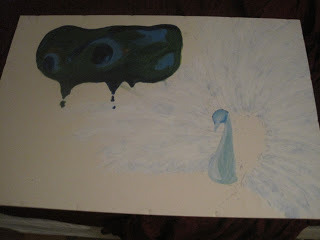 Part 1
Part 1
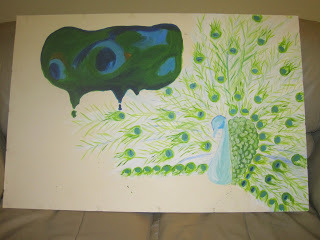 Part 2
Part 2
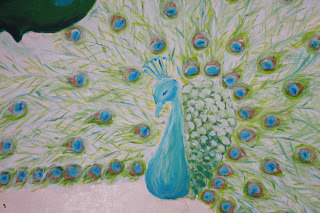 Part 3
Part 3
 And 4 (Bit blurry. Sorry.)
And 4 (Bit blurry. Sorry.)
A gift to my brother for letting me stay with him for two months:

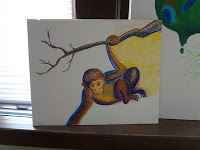

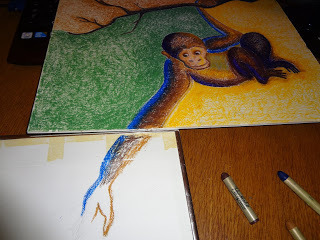 This is where it gets interesting...
This is where it gets interesting...
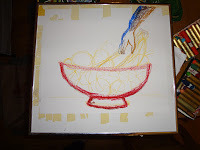
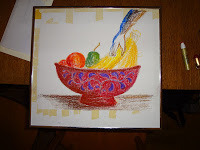
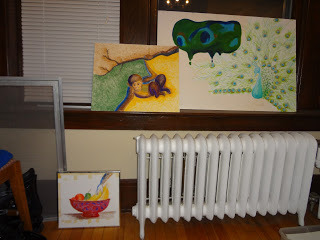 The fruit bowl should be up higher to make one continuous picture of the monkey, but you get the idea! I don't actually have a picture of the final product for the monkey project. Will update when I take one!
The fruit bowl should be up higher to make one continuous picture of the monkey, but you get the idea! I don't actually have a picture of the final product for the monkey project. Will update when I take one!
And here's one more for the road. The dino on the penny-farthing is mine; the koi fish is by my brother:

Happy creating!
A peacock painting I created from a dream I had. In my dream, the peacock was pale blue and all its colors were floating in a liquid blob above its head...
 Part 1
Part 1
 Part 2
Part 2 Part 3
Part 3
 And 4 (Bit blurry. Sorry.)
And 4 (Bit blurry. Sorry.)A gift to my brother for letting me stay with him for two months:



 This is where it gets interesting...
This is where it gets interesting...

 The fruit bowl should be up higher to make one continuous picture of the monkey, but you get the idea! I don't actually have a picture of the final product for the monkey project. Will update when I take one!
The fruit bowl should be up higher to make one continuous picture of the monkey, but you get the idea! I don't actually have a picture of the final product for the monkey project. Will update when I take one!And here's one more for the road. The dino on the penny-farthing is mine; the koi fish is by my brother:

Happy creating!
Published on March 17, 2013 20:46



